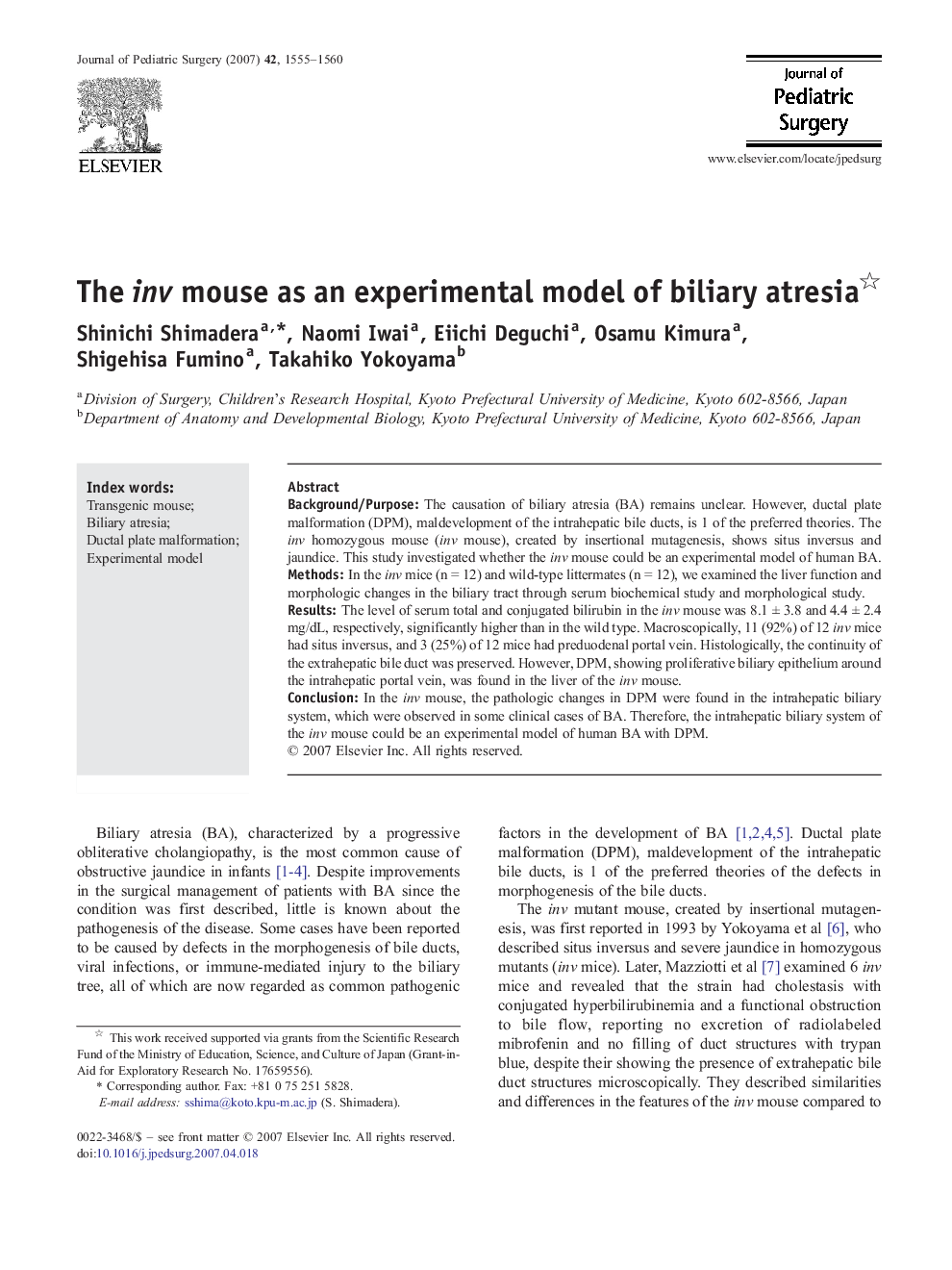| کد مقاله | کد نشریه | سال انتشار | مقاله انگلیسی | نسخه تمام متن |
|---|---|---|---|---|
| 4159662 | 1273830 | 2007 | 6 صفحه PDF | دانلود رایگان |

Background/PurposeThe causation of biliary atresia (BA) remains unclear. However, ductal plate malformation (DPM), maldevelopment of the intrahepatic bile ducts, is 1 of the preferred theories. The inv homozygous mouse (inv mouse), created by insertional mutagenesis, shows situs inversus and jaundice. This study investigated whether the inv mouse could be an experimental model of human BA.MethodsIn the inv mice (n = 12) and wild-type littermates (n = 12), we examined the liver function and morphologic changes in the biliary tract through serum biochemical study and morphological study.ResultsThe level of serum total and conjugated bilirubin in the inv mouse was 8.1 ± 3.8 and 4.4 ± 2.4 mg/dL, respectively, significantly higher than in the wild type. Macroscopically, 11 (92%) of 12 inv mice had situs inversus, and 3 (25%) of 12 mice had preduodenal portal vein. Histologically, the continuity of the extrahepatic bile duct was preserved. However, DPM, showing proliferative biliary epithelium around the intrahepatic portal vein, was found in the liver of the inv mouse.ConclusionIn the inv mouse, the pathologic changes in DPM were found in the intrahepatic biliary system, which were observed in some clinical cases of BA. Therefore, the intrahepatic biliary system of the inv mouse could be an experimental model of human BA with DPM.
Journal: Journal of Pediatric Surgery - Volume 42, Issue 9, September 2007, Pages 1555–1560